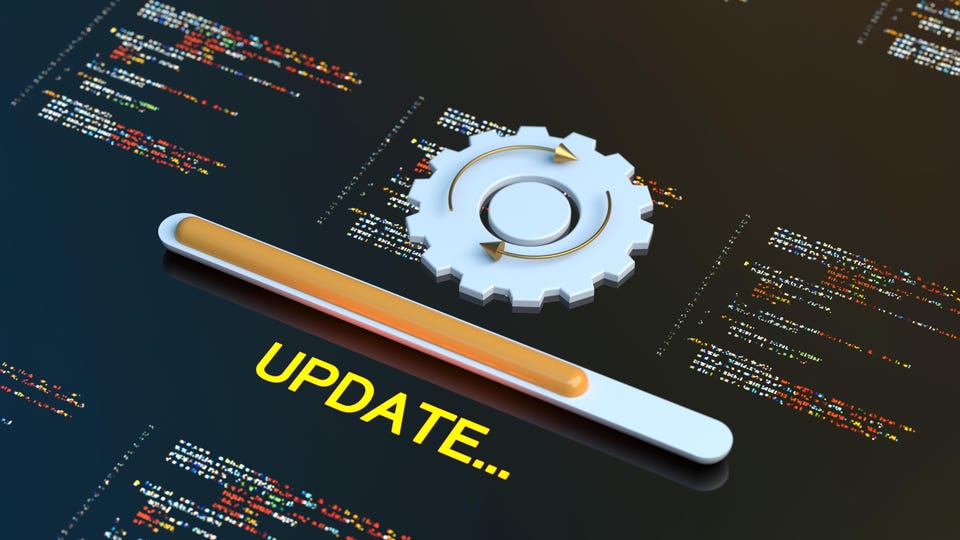Six Signs Your Financial Software Is Legacy (And How You Deal With It)

Kostyantyn Volkov is CEO and cofounder of IT Craft, a company specializing in full-cycle software development of any complexity.

getty
Building FinTech software is complex. Software owners must focus on diverse aspects such as compliance with regulations, source code quality, security and more.
Still, the launch of an impeccable app is not enough in the long run, despite all invested efforts. As with every digital solution, financial systems need constant upgrades to keep the highest standards.
Modernization requires much effort, aligning goals, project management and technologies. It can be too tempting to linger with improvement. Yet, modernization should be a vital part of the maintenance plan of every system.
It becomes critical for financial solutions that have been running for some time, even though you feel yours is still working fine.
Emerging Signs Of Modernization Needs
No software becomes a legacy overnight.
The codebase grows. It accumulates issues until it becomes unmanageable.
The development team slowly shifts its priorities from long-term goals to short-term issues. Where the team once focused on fast delivery of so much required functionality, now it focuses on endless bug fixing in the hope that the new deployment breaks nothing.
The visible symptoms include:
Increased update delivery time: Due to increased codebase complexity, the development team needs more time to deliver the same scope. Many manual operations are left without automation. Engineers inflate testing estimates.
Increase in maintenance costs: Software code clarity lowers as the project accumulates tech debt. When left without attention, tech debt starts affecting project velocity. Fixes become more expensive, taking more time. Engineers cannot estimate how long tasks can take.
Inconsistent performance: Growing user load is a hallmark of a popular product. Yet, it pushes software scalability to its limits. Eventually, the team will need to reconsider infrastructure and software architecture to handle effectively increased traffic volumes.
Challenging integrations and data exchange: Newly released APIs open opportunities, e.g., in open banking. Still, integrations take too much time or are not always possible. Data exchange with counterparts remains convoluted and unstable.
Technology lifecycle reaching its end: While core technologies such as programming languages remain intact for a long, framework versions become outdated fast.
Developers must regularly upgrade the tech stack to the latest version to close emerging vulnerabilities.
There is more. Delayed updates increase incompatibility. The team not only develops source code of new features but also spends time on adjustments to ensure compatibility with the core stack. Testing takes more time too. Costs of updates and maintenance surge.
Staff turnover: Financial software requires skills and expertise. However, skilled engineers prefer to avoid handling less cutting-edge technologies. It becomes more challenging with every passing year to find a talent ready to work on a legacy project.
Responding To Modernization Challenges
Modernizing the core of a financial solution is always complex.
Even though changes are welcome, businesses must not rock the boat. Maintenance and improvement operations must remain unnoticed by end users. They must refrain from blocking financial operations.
From this point of view, incremental modernization is preferred. It is less risky than a large-scale transformation. The development team works on small-scale improvements. Regular deliveries include managing accumulated tech debt, security enhancements and automated operations.
Deep modernization comes into the foreground when a project has been for a while in the market, as incremental steps are already limited. Engineers need to improve many aspects. These include rearchitecting, source code refactoring, infrastructure optimization and more.
Here are some key points that help you prepare for modernization.
Big plans, little steps: An incremental approach is essential. When the scope is divided into little portions, the team adjusts easier. It can see the immediate results and adjust the next steps.
Microservices architecture: 25% of all software vendors will rework their solutions into microservices by 2026. Microservices work best for large projects. They ensure 24/7 availability, faster feature deliveries, dynamic consumption of resources and more.
Still, microservices might not work when you have a simple app. Carefully weigh the pros and cons with your development team. Opt for microservices when you plan to scale and expand.
Customer-centric development: The Modernization team should keep evolving user needs in its focus. Businesses need to consider expansion to new, trending devices, e.g., launching a payment app for smartwatches. Developers should focus on the features that meet the expectations provided in user feedback, thus adding value to the project.
Metrics and monitoring: Flawless, uninterrupted operations are critical for financial apps. Performance metrics enable the detection of problems early and prioritize tasks in the modernization plan when needed. For instance, mean load time, the number of timeouts and server resource consumption may signal the team’s need to focus on scalability.
Closing Thoughts
The financial industry is undergoing rapid transformations. Businesses must prepare for it. Companies might not even notice that their financial software has become less-than-perfect. Or they might not be ready for modernization. Every change in mission-critical software is challenging. Tech debt might seem better than blocking operations for several hours and suffering losses.
Yet, financing cannot remain conservative. Modernization is unavoidable, either an incremental or a full-scale one. The use of cutting-edge technologies makes faster, more consistent deliveries possible. Enhanced security is retained.
It is vital to identify key aspects that bring immediate value and move from one aspect to another.
Besides codebase improvement, businesses might need to reconsider their product development and evolution approach. Keeping track of user feedback decreases the risks of irrelevance.
As always, team alignment is important. The entire product team needs to keep in mind the bigger, customer-oriented picture for which it shares common goals.
Forbes Technology Council is an invitation-only community for world-class CIOs, CTOs and technology executives. Do I qualify?
